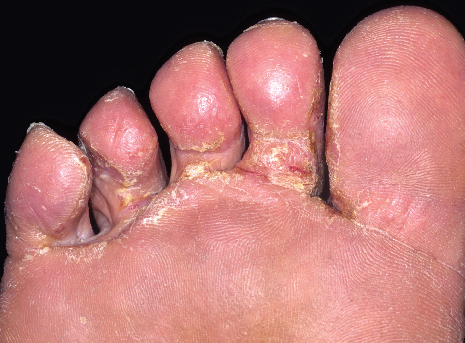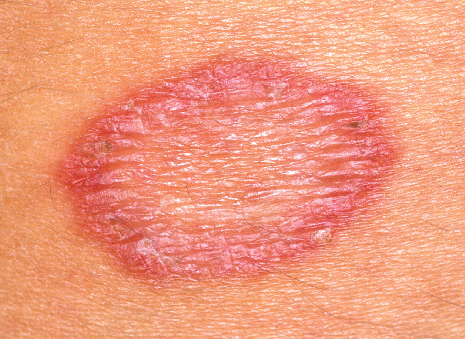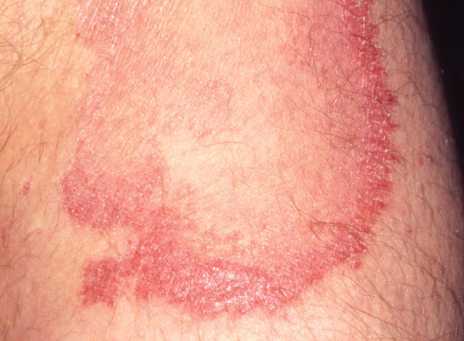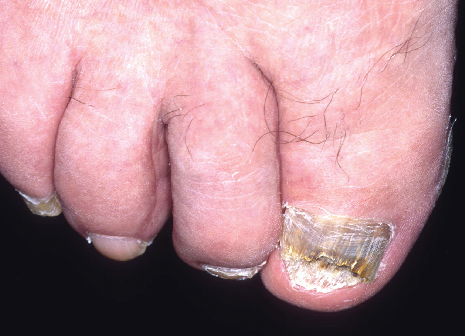 Tinea pedis (athlete's foot)
Tinea pedis (athlete's foot)
Athlete's foot is a highly contagious condition that flourishes in the warm, moist environment between the toes and is passed from person to person on small pieces of skin shed from the feet as the sufferer walks around barefoot. It is often picked up from damp changing rooms or swimming pool floors.
Symptoms usually start between the fourth and fifth toes. The skin appears red and itchy at first, later becoming white, inflamed and weepy. It may also crack and peel.
 Tinea corporis (body ringworm)
Tinea corporis (body ringworm)
Body ringworm can affect people of all ages. It normally starts as small patches which are ring-shaped or oval, while the edges are red and scaly. Inside the ring, the skin may be scaly, but looks healthy in all other respects. These patches can multiply and grow, and the rings may merge together. The rings will feel slightly raised to the touch and the skin underneath may feel itchy.
 Tinea cruris (jock/dhobie itch)
Tinea cruris (jock/dhobie itch)
Sometimes called jock itch or dhobie itch, this condition affects the groin area and inner thighs because the fungi thrive in the warm, moist conditions found in these places. It is more common in men and is frequently found in youngsters and people who are overweight or obese.
Typically, the infected area becomes itchy and red, mainly in the creases between the tops of the legs and the genitals. A rash may appear in the groin. The skin may also flake, peel or crack. Exercising and wearing tight clothing or underwear can make symptoms feel worse as clothing rubs against the skin.
You may find that customers with jock itch also have athlete's foot, because fungal spores from the feet can easily be transferred to the groin when dressing or drying off after a shower.
 Tinea unguium (fungal nail infections)
Tinea unguium (fungal nail infections)
Fungal nail infections are more common in people over 55 years and in younger people who share communal showers, such as swimmers or athletes. Toenails are more commonly affected than fingernails.
Infection of the toenails can occur when athlete's foot spreads from the skin to the nail. Fingernail infections are more likely to occur in people who keep their nails in water for long periods of time. Constant washing may damage the skin at the base of the nail and allow the fungus to enter.
Fungal nail infections may affect just one nail or several nails. At first, the nail may look thickened or discoloured. If the infection gets worse, white or yellow patches may appear where the nail has come away from the nail bed. Sometimes the whole nail comes away. The nail may also become soft and crumble, and the skin next to it may be inflamed or scaly. Left untreated, the infection can destroy the nail and nail bed and become painful.
